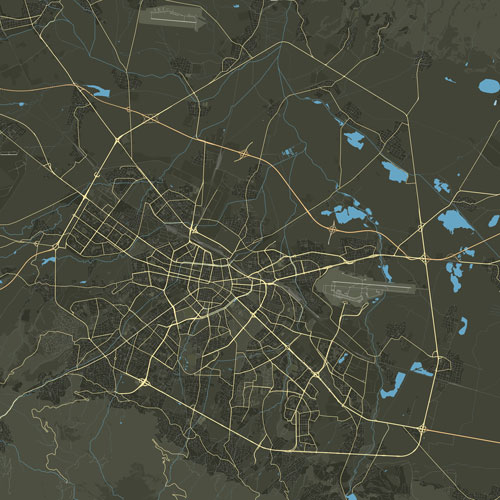The archaeological reserve Abritus, with an area of 1000 decares, arose as a Thracian settlement. It is proved by the found tools of labor and household objects such as the altar from the time of the ruler Remetalk the First. After long wars, the Romans destroyed the Thracian state and in the 45th year of the new era they finally conquered the Balkan Peninsula.
In the period I-IV centuries pagan deities were worshiped in Abritus, and after the recognition of Christianity as an equal religion – also Christ. One of the most common cults there was that of Hercules, but Jupiter or Mars, Sabazius, Apollo, Hygia, Ares, Heracles and many others were also worshipped.
In 251, a great battle took place here between the Roman troops led by Emperor Decius Trajan and the Goths. The emperor and his son died in the battle. Another restoration of Abritus was carried out at the beginning of the IV century by Emperor Constantine the Great. This Thracian-Roman city existed until the end of the 6th century, when it was plundered and depopulated. In the 7th century, a Bulgarian fortress arose on its ruins, destroyed during the campaigns of the Kiev prince Svetoslav, and then a medieval settlement, completely destroyed in the 11th century by the Pechenegs. In the 13th and 14th centuries, a Bulgarian settlement called Hrsgrad or Herazgrad arose west of Abritus, the extension of which is the current Razgrad.
All these facts were unknown to both science and the local population for centuries. The curtain was lifted in 1887 by academician Ananie Yavashov, who began excavations in the western part of the Hisarlush Mound. Karel Shkorpil was interested in his discoveries, but systematic research was started by Professor Teofil Ivanov in 1953 with the assistance of the History Museum in Razgrad. And gradually Abritus unfolded before the eyes of the explorers all his splendor and majesty. Today, the expositions can be seen flint artifacts from the Paleolithic, the earliest traces of human presence in the Razgrad region, a stone ax and a jade amulet from the Neolithic.
Obviously, the ancient societies reached their heyday during the late Stone-Copper Age. Along with the flint tools, the first copper tools, ceramics, exquisite cult plastic and ornaments made of Mediterranean shells appeared. There are many finds from the Thracian period, especially objects and weapons cast in bronze. In addition to the famous golden Pegasus, the country’s largest late antique gold coin treasure of 835 pieces (4 kg) minted by 10 emperors and empresses from the 5th century AD who ruled the Eastern Roman Empire was also found here.
Abritus was built like Roman cities – with straight streets and public buildings built in the center around a town square /forum/. It was supplied with water through several clay /ceramic/ water pipes. In 1976, its fortification system was fully revealed. The total built-up area of Abritus covers 300 acres, half of which is protected by the fortress walls. Of particular interest is the so-called Peristyle – a complex located on an area of 3,200 meters, the residence of a high state magistrate. Six shops are entered from a large portico on the southern facade with an Ionic colonnade, and from the southern entrance a small corridor leads to a large courtyard under the open sky, the four walls of which are surrounded by a Roman-Ionic colonnade /peristyle/.
That is where the name of the complex comes from. It had large utility rooms, a representative reception hall, bedrooms and service rooms. The building was used until the end of the 6th century, when it fell victim to the Avar invasion along with the entire city. In December 2002, a Lapidary was exposed and opened here, which includes about 60 pieces of epigraphic monuments, tombstones and architectural details.
Work time:
April 1 – October 30: 09:30 – 18:00 without a day off
1 November – 31 March: 09:00 – 17:00
Saturday and Sunday – by prior request (Requests can be submitted from Monday to Thursday)
Entrance fees:
for children up to 7 years old and people with disabilities – free of charge,
for students and pensioners – BGN 1.00,
for adults – BGN 2.50.
Contacts:
Address: city of Razgrad, 70 “April Uprising” Blvd
Tel: +359 84 662460

